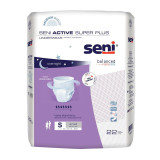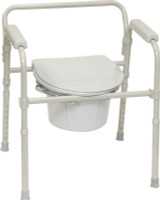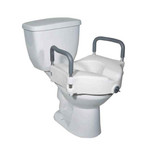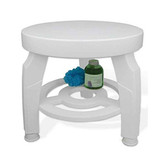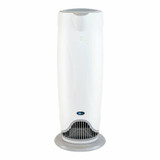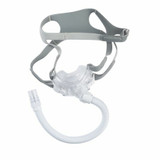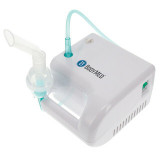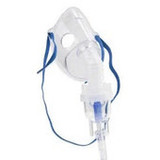
The Caregiver Guide – Looking after Caregiver Health
It's fair to say that caregiving is a huge “industry” nowadays. An article published by the American Association of Retired Persons reports that more than 53 million people provide unpaid care to an adult in the United States alone. A caregiver spends an average of 24.4 hours per week caring for their loved ones, according to this report by the Family Caregiver Alliance. Unfortunately, this has given rise to increasing issues with caregiver health.
Caregiver burnout is a state of physical, emotional and mental exhaustion that can occur when a caregiver is responsible for the long-term care of a loved one. It’s a common experience for many caregivers and often has serious consequences for the caregiver as well as the person they are caring for.
This article provides some tips and techniques for caregivers to avoid caregiver burnout and maintain their health and well-being. For their own good and for the sake of ensuring a safe and sustainable level of care.
Caregiver Self-Care Products and Tools
Life happens at a frenetic pace nowadays, and we often try to keep up. Eventually, this rat race takes its toll. Fortunately, technology has kept up, and society, in general, has been able to adapt to the pace and recognize the need for preventative or remedial measures. We look at some of the tools available to caregivers.
Meditation apps like Headspace and Calm offer guided meditation sessions to help reduce stress and anxiety, improve sleep, and promote overall wellbeing. These apps often include features like sleep stories, breathing exercises, and mindfulness techniques tailored to caregivers' needs.
Fitness trackers can help caregivers monitor their physical activity, sleep patterns, and other health metrics, encouraging them to stay active and maintain a healthy lifestyle. These trackers can also provide personalized coaching and goal-setting features to help caregivers stay motivated.
Keeping a journal can be a therapeutic way for caregivers to express their thoughts and feelings, track their progress, and set goals for self-improvement. Journaling can also help caregivers identify patterns in their emotions and behaviors, allowing them to make positive changes.
Time Management and Organization Aids
Caregiving places an enormous burden on caregiver health, both physically and emotionally. To reduce the stress and risk of burnout, caregivers should be well organized and manage their time effectively. Here are some aids to help:
Planners designed for caregivers or digital calendars like Google Calendar or Apple Calendar can help track appointments, medication schedules and other essential tasks, ensuring nothing falls through the cracks. These planners often include sections for tracking health information, emergency contacts, and daily routines.
While planners will alert you when something must be done, you also need reliable partners to ensure it gets done. For example, LL Medico will take all the worry out of your management of incontinence products, nutritional supplements and other senior care requirements. In fact, with Autoship, you don’t even need a reminder. The set-and-forget delivery schedule will ensure that your products are delivered exactly when you want them.
Task management apps like Todoist or Trello are good for creating to-do lists, setting reminders and prioritizing tasks. These apps often include collaboration features, allowing caregivers to work with other family members or care team members.
Another stress-relieving idea is to plan meals in advance and to use a grocery delivery service. It can also save a lot of time and take some pressure off the caregiver. It also helps caregivers maintain a healthy diet for themselves and their loved ones while accommodating dietary restrictions and preferences.
Tips for Effective Communication
The relationship between a caregiver and their patient is built largely on trust and mutual understanding. A stable and comfortable relationship takes a lot of pressure off both parties and substantially reduces the emotional burden on caregiver health. We examine a few ways to improve the quality of communication.
Be patient and attentive. Give your patient or loved one ample time to express their thoughts and feelings, and actively listen to what they say. Practice active listening techniques, such as paraphrasing and asking open-ended questions, to show them that you are genuinely interested in their thoughts and concerns.
Use clear, simple language. Speak slowly and clearly, using simple words and phrases to ensure they understand the message. Avoid using jargon or technical terms that may be confusing, and consider using visual aids or demonstrations to help clarify complex concepts.
Use non-verbal cues. Maintain eye contact, use facial expressions, and employ gestures to reinforce your message and show empathy. Be aware of your body language and tone of voice, as these can significantly impact how your message is received.
Validate their feelings. Acknowledge seniors' emotions and concerns, and offer reassurance and support. Show empathy by expressing understanding and validating their feelings, which can help build trust and rapport.
Resources for Caregiver Support and Education
Caregiving is not something you should take on alone. Nowadays, numerous resources are available to provide support and assistance to caregivers. Many of these resources and support groups are free. Some of these include:
The Family Caregiver Alliance and National Alliance for Caregiving. They offer information, resources, and support services for family caregivers. The organizations conduct studies, webinars and workshops to raise awareness and provide online learning modules and other resources to help caregivers enhance their skills and knowledge and to connect with other support structures.
AARP Family Caregiving provides resources, tools, and expert advice for caregivers. AARP offers a variety of articles, videos, and guides on topics such as legal and financial planning, health and wellness, and housing options for seniors.
The Alzheimer's Association provides information, resources, and support for caregivers of patients with Alzheimer's disease or other types of dementia. The association offers educational materials, support groups, and a 24/7 helpline to assist caregivers in managing the unique challenges of dementia care.
Balancing Caregiving with Personal Life
In caregiving, maintaining a good work-life balance is probably more important than with any 9-to-5 routine. Caregivers need to give themselves a break from time to time to escape the constant physical and emotional toll that some of them endure.
Set boundaries. Establish limits on caregiving responsibilities and communicate them clearly to family members and care recipients. Setting boundaries can help prevent caregiver burnout and ensure caregivers have time for their own needs and interests.
Prioritize caregiver health through proper self-care. Schedule regular time slots for self-care activities, such as exercise, hobbies, or socializing with friends. Arrange for occasional temporary relief from caregiving duties through respite care services in order to recharge. Respite care can be provided by family members, friends, or professional caregivers and can range from a few hours to several days.
Build a support network. Connect with other caregivers, friends, and family members who can offer emotional support, practical assistance, and encouragement. The organizations mentioned above are a good place to start,
Conclusion
In conclusion, caregiving is a challenging yet rewarding journey requiring caregivers to prioritize their own wellbeing to provide the best possible care for their loved ones. Despite the challenges of caregiving, it is possible to maintain your quality of life. You just have to make it a priority. Remember, "You cannot pour from an empty cup." Take care of yourself first, so that you can take care of others.










